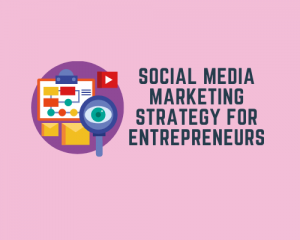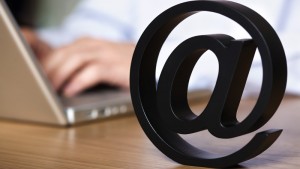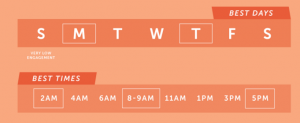A critical component of a winning B2B tradeshow marketing strategy is a well-designed, well-planned, impactful booth. In a crowded exhibition hall, your booth will either be your firm’s greatest asset or perhaps your greatest liability.
Exhibiting comes at a premium, so it’s important to make the most of your space, regardless of how big or how small it is. This means having a strategically and creatively designed display (see #1-3), but it also means arranging the space itself to create an optimal environment for engaging with prospects and clients (see #4-5). Here are 5 considerations for maximizing the impact of your tradeshow booth.
1. Stand out at the tradeshow, don’t blend in
In a sea of booths, often on either side of crowded exhibition hall aisles, you have mere seconds to stand out from the rest of the pack. So it’s necessary that your booth looks and feels different than those around it. Which means design is critical!
But design starts with the particular display you choose to purchase. There are virtually unlimited options of tradeshow displays to choose from, and there are new ones coming out all the time. And while the ease of setup is often a key consideration, that should NOT be the determining factor in choosing a display, especially if it’s to the detriment of design and distinctiveness. With so many options, don’t just choose the one that 75% of all your competitors will be using. Instead choose a display that differentiates your firm from all the rest.
Once you’ve selected a unique display, it’s critical that the design helps your firm “pop” from the sea of booths. Here are a few questions to consider as you think about your design:
- How noticeable is your design compared to the other booths?
- How well can your logo be seen from across the hall?
- How easy can your value proposition be read from afar? (see #2)
- Will any important photos/images/text be hidden by people standing in front of the booth?
It’s a good idea to take a stroll of the exhibition hall at the next tradeshow and pay close attention to both the display system and the design of your competitors’ booths. Snap some photos and keep these in mind as you plan and design yours to stand out.
2. Quickly and succinctly convey who you are and what you do
This can’t be overstated: people walking by should be able to instantly recognize who you are and what you do. Don’t make them have to think! Creating a powerful visual impact is important to catch their eye, but you also need clear and simple messaging in order to lure people in. This becomes a challenge for firms that provide a wide range of services and/or products, or who work in various industries. But much like the messaging on the homepage of your firm’s website, the messaging on your booth display should be succinct and clear.
If your firm goes to a wide range of tradeshows and conferences and serves a diverse set of industries and client types, a generic “corporate” booth may not be ideal. Consider a display system that will allow you to swap panels with tailored messaging, or have separate displays altogether.
3. Remember your tradeshow display a backdrop, not a brochure
Another important thing to keep in mind is that your booth is intended to be a backdrop, not a brochure. It isn’t intended to tell the whole story, but to simply tee up the “who” and the “what,” draw in interested prospects and let your booth staff take it from there. Don’t give in to the temptation (or the pressure from sales and business development staff) to try to list everything you firm can possibly do. And don’t clutter up the design with tons of brochure-esque copy that is unlikely to get read. It will only serve to minimize the impact of your key messaging and other design aesthetics.
4. Ditch the table
One of the longstanding tradeshow practices that needs to go the way of the dinosaur is the token 6’ to 8’ table that gets placed in the front of the booth space (usually with a branded tablecloth draped over it). Having a table across the front of the booth space can make it appear closed off and uninviting. Instead, you should create a space where people can enter without feeling trapped (see #5). While many conferences and tradeshows include these tables as part of your booth, you should either send it back or move it to the side.
Ask yourself, “What function does the table serve?” Typically they are used to hold brochures (which largely get ignored), giveaways and fish bowls for collecting business cards. There are a myriad of small stands and tables that can be used to accomplish the same purpose (that take up seriously less real estate). So unless using a large table serves a functional utility that contributes to engagement, it’s time to move pass the token table.
5. Create an optimal environment for engagement
One of the reasons why tradeshows are still such a valuable marketing tactic is the face-to-face, relationship-building opportunities they create. It’s one thing to interact with prospects and clients digitally, but it’s an entirely different thing to interact in person. That’s why it’s important to keep the perspective that the display is there to attract the audience, but your firm representatives are there to engage.
One way to immediately engage with potential customers at a tradeshow is by setting up a space that makes them feel welcome. You can create different stations in the space for people to learn about your firm and services or products. Depending on your situation, this may involve leveraging tablets or computers, widescreen displays or some other tools for engagement. It’s important to design the layout of the space in a way that will maximize the usable area and allow for multiple conversations and interactions to take place at the same time. Make your booth an experience, not just a destination by doing what you can to make it as inviting as possible. This subtle practice in “feng shui” will decrease the chance of having people pass you by and increase the likelihood that they’ll step in and make a connection with one of your representatives.
Begin with the end in mind
When it comes to planning your tradeshow booth environment and designing your display, you have to stay focused on the end goal and strategy. What is your purpose for exhibiting? What are your intended outcomes and objectives? What do you want attendees to do once they stop at your booth? These goals should be the underlying reason behind every decision you make regarding booth location, size, layout, components, display design and staffing.
Business & Finance Articles on Business 2 Community(25)
Report Post








